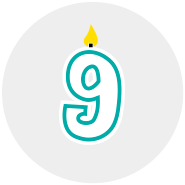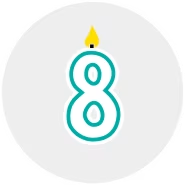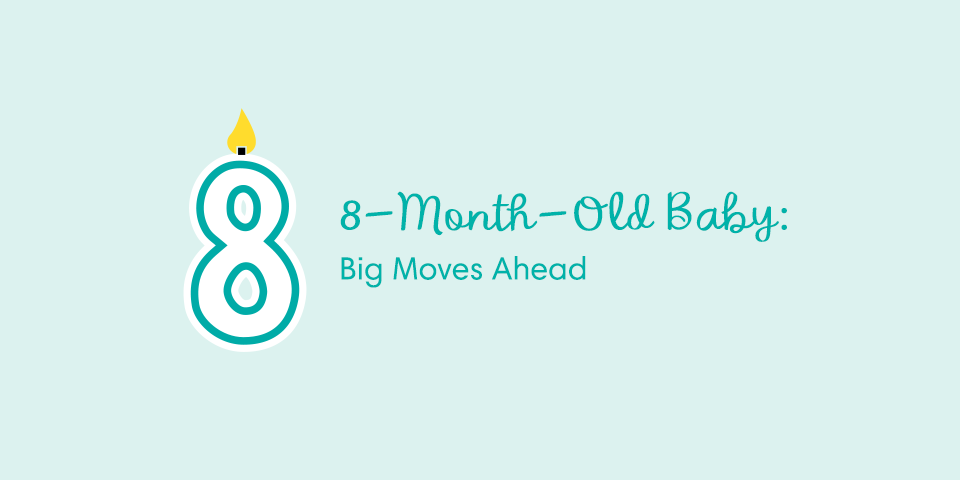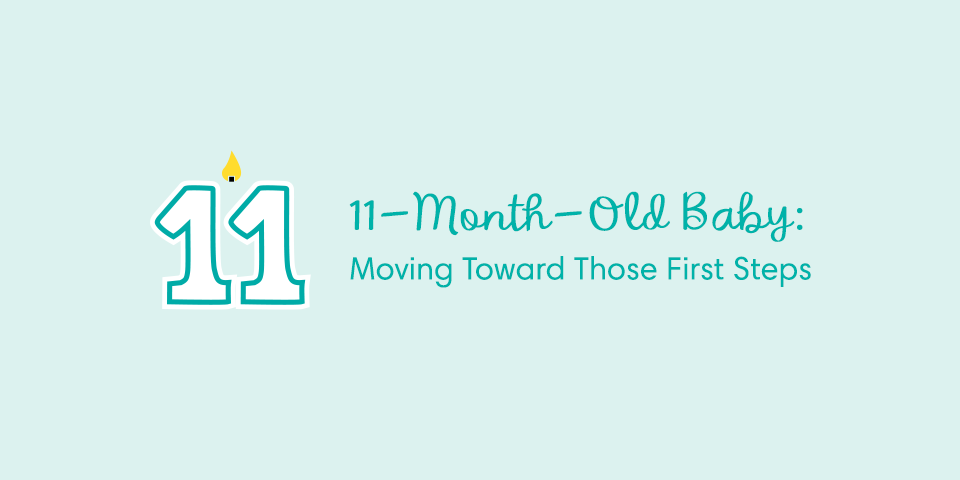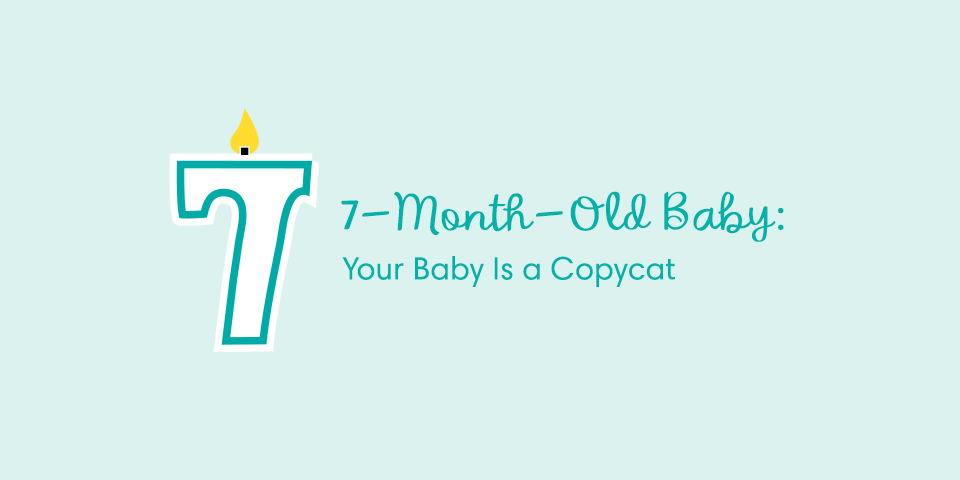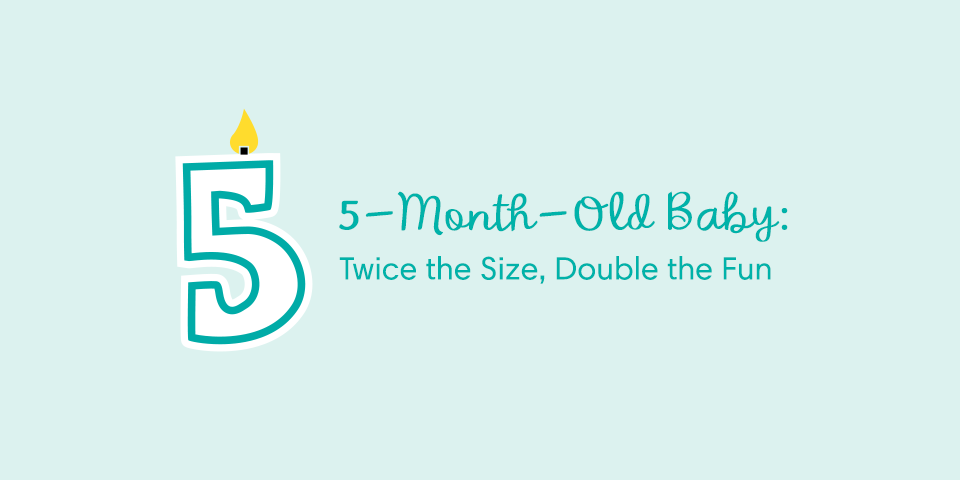Your 9-Month-Old Baby's Development and Milestones
Your baby is becoming more and more mobile, perhaps even crawling by now—and you couldn’t be prouder of the progress they’re making. There are so many things happening this month, including improvements in your baby’s ability to eat solids and the way they can use their fingers. Read on to find out more about the developmental milestones to look out for when it comes to your 9-month-old baby, and the kinds of eating and sleeping habits you might see at this stage.
Baby Development Milestones
By now you know how much your baby enjoys playtime—especially if it’s with you! And you’ll have seen how much they’re growing and changing. There is no hard and fast rule about what a 9-month-old baby “should” be doing at this stage, but these are some of the development milestones you might notice around this time.
Growth and Physical Development: Does Your Baby’s Belly Stick Out?
All babies grow at their own rate. At your next healthcare visit, your baby’s provider will track your 9-month-old baby’s weight, length, and head circumference using the infant growth charts to make sure their growth is on track.
When your baby begins standing (whether it’s now or in the next few months), you might notice that their belly and bottom both stick out a little. This posture might look a little odd, but it's perfectly normal for this stage of development. Their alignment will correct itself when their balance improves and they become more confident walkers—probably during their second year.
Senses: Let Your Baby Follow Their Nose
At this stage, all your baby's senses help them learn about their world. To help your baby explore their sense of smell, introduce them to new and different scents. For example, go outside and let them smell flowers or fresh-cut grass. Let them take in the scents of various types of foods, objects, and materials you find indoors, too. Just make sure whatever you introduce is safe for them to smell.
Movement: Picking Up New Experiences!
Around this time your baby might figure out how to roll onto their tummy from a seated position and get back up again. All these motions are strengthening their muscles in preparation for eventually being able to walk.
At 9 months old, your baby may or may not be crawling. Or they may be doing something similar to crawling like scooting on their bottom or slithering on their tummy. Some babies skip crawling altogether, while others master it a little later.
Your baby’s hand and finger skills (fine motor skills) are also coming along. For example, they will probably have mastered the raking grasp, meaning they’re able to reach out and pull objects toward them. Now, they’re working on developing what’s called the pincer movement or the pincer grasp—the ability to pick up and hold things between the thumb and forefinger.
Your baby is gaining better control of their fingers and hands as they play with objects and begin to feed themselves. They’ll pick things up, shake them, bang them, and throw them, delighting in the noise they’re making as items crash to the floor. For this reason, too, make sure that whatever they have to play with is safe and unbreakable.
Cognitive Development: Life’s Simple Pleasures
Your baby has a very short attention span and may be interested in playing with a toy for only a few minutes before wanting the next fascinating object. You don’t need to buy brand-new toys for your 9-month-old baby, though. They’ll be just as happy with basic household items like cereal boxes or plastic tubs.
The key may be this: Your baby will enjoy playing with things that are just a little different from what they already know and are familiar with. In fact, if something is too new and different, they might feel frightened or overwhelmed by it. So, as an example, if your little one loves playing with a cereal box you could put a ball in it or add a string to it so that they can pull the box along.
Another of life’s simple pleasures for your baby could be the humble mirror. While in past months your little one may not have been able to recognize their own reflection (perhaps they perceived it to be another baby or simply a magic show) now they might be reacting to their own reflection in a way that indicates they know they are seeing themselves.
For example, while looking in the mirror they may grab a strand of hair or try to rub something off their chin. Reinforce this “self-image” by playing with them in front of the mirror: Touch and say the names of different parts of their body or make different facial expressions and tell them what kind of face you’re making.
Have you noticed how perceptive your baby is? At 9 months old your baby can read the emotions on your face. That being the case, try to keep strong negative emotions at bay; instead, provide your baby with consistent and warm contact, so that they feel secure and loved, not overwhelmed and upset.
Tips and Activities for Supporting Your 9-Month-Old Baby’s Development
Here are some things to do with your 9-month-old to promote their healthy growth and development at this stage:
Feeding Your 9-Month-Old Baby
Around this time, about half of your baby’s daily calories might come from soft table foods and purees, with about the other half coming from breast milk or formula. Wondering about how often “should” an 8-month-old eat? Your baby’s feeding schedule would ideally include three main meals a day with two snacks in between those meals.
And what can a 9-month-old eat?They may be able to help themselves to finger foods, such as small pieces of steamed vegetables or soft banana. You could also offer them a small spoon with a little yogurt on it so that they can try to move it toward their mouth.
During self-feeding, much of your baby’s food will end up on the table or floor, or on their face or clothes, so don’t expect them to be able to feed themselves a complete meal just yet. Always supervise your baby when they’re trying to eat and don’t give them big chunks of food, or any small hard foods; at this stage, they may swallow without chewing, and bigger pieces can be a choking hazard.
Here’s an example of a daily menu for your 9-month-old including both baby food and breast milk or formula. It also gives you an idea of approximately how much to give your 9-month-old.
How Much Sleep Does a 9-Month-Old Baby Need?
How many hours “should” a 9-month-old sleep? And how many naps are needed? At this age, babies typically sleep about 10 to 12 hours at night, and take about 2 naps during the day, usually mid-morning and mid-afternoon.
By this stage your baby probably won’t be needing a middle-of-the-night feed but may wake up at night if they feel anxious about where you are. They might suck their thumb to cope or snuggle with a comfort item such as a small blanket.
If you hear your baby cry, go to them and briefly reassure them that all is well. Of course, you should always check that your baby is comfortable and not sick, but if everything seems OK, resist turning on the light and picking them up. The key is to calmly and consistently reassure them that you’ll be there if they need you, and slowly teach them that they can sleep peacefully without worrying that you’re not there.
To help you track your 9-month-old’s nap and sleep schedule, download the Smart Sleep Coach app by Pampers. Co-created by pediatricians and sleep experts, this easy-to-use app can come in handy when sleep training or when encountering difficulties like sleep regression.
A Day in the Life of Your 9-Month-Old Baby
A typical 9-month-old baby’s daily schedule could include sleeping, feeding, eating, bathing, and playing. Here’s just one example of what a day in your baby’s life might look like:
Your Baby’s Health
Sun protection is crucial for your baby’s skin. In the warmer months it’s natural to want to go outside with your baby, but always remember that too much time in the sun can damage skin. In fact, harmful UV rays can cause damage even in the cooler months, so these sun protection tips are important to follow year-round:
Along with sun protection and skin care, other health concerns to be aware of include whooping cough and middle ear infections.
Items You Will Need This Month
On the lookout for some baby gear this month? Here are some items that might come in handy:
FAQS AT A GLANCE
About half of your baby’s daily calories should come from breast milk or formula, and the rest might come from solids. Nine-month-old babies can eat things like
- pureed fruits and vegetables
- small pieces of steamed veggies
- small pieces of soft fruits such as banana
- well-cooked whole-grain pasta
- small pieces of whole-grain bread
- small pieces of chicken
- scrambled eggs
- whole grain cereals
- yogurt
- oatmeal.
Your Life as a Parent: How to Plan a Baby-Friendly Vacation
Are you thinking about a family trip? You might feel anxious about traveling with a baby in tow, but this is completely doable—and lots of fun! Here are some tips to make your trip a success:
Checklist for This Month
For even more information, sign up to get our regular emails:
How We Wrote This Article The information in this article is based on the expert advice found in trusted medical and government sources, such as the American Academy of Pediatrics and the American College of Obstetricians and Gynecologists. You can find a full list of sources used for this article below. The content on this page should not replace professional medical advice. Always consult medical professionals for full diagnosis and treatment.
- American Academy of Pediatrics, Caring for Your Baby and Young Child: Birth to Age 5, 7th ed. (New York: Bantam Books, 2019).
- healthychildren.org. “AAP Schedule of Well-Child Care Visits.”
- healthychildren.org. “Choose Water for Healthy Hydration.”
- Zero to Three. “Survival Strategies for Traveling With Your Baby or Toddler.”
